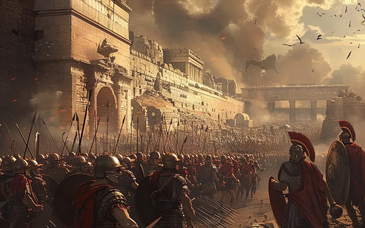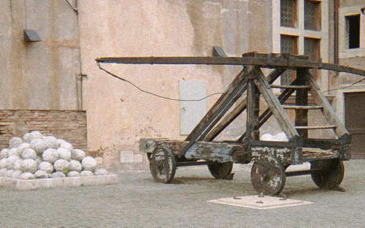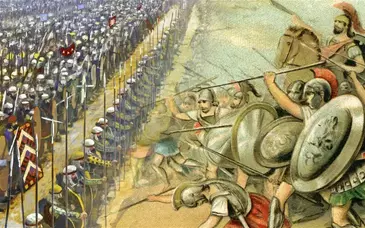Mangonel: type of catapult or siege machine used to throw projectiles at a castle's walls
A mangonel (derived from Greco-Latin word manganon, meaning "engine of war")was a type of catapult or siege machine used in the medieval period to throw projectiles at a castle's walls. The exact meaning of the term is debatable, and several possibilities have been suggested. It may have been a name for counterweight artillery (trebuchets), possibly either a men assisted fixed-counterweight type, or one with a particular type of frame. The Arabic term manajaniq comes from the same word, and applies to various kinds of trebuchet. It is also possible that it referred to more than one kind of engine, in different times or places, or was a general term. For this use see trebuchet.
In modern parlance catapult is often used as the name of a Medieval form of onager, though there is little evidence for this historically. In this sense, mangonel had poorer accuracy than a trebuchet (which was introduced later, shortly before the discovery and widespread usage of gunpowder). The mangonel threw projectiles on a lower trajectory and at a higher velocity than the trebuchet with the intention of destroying walls, rather than hurling projectiles over them. It was more suited to field battles.
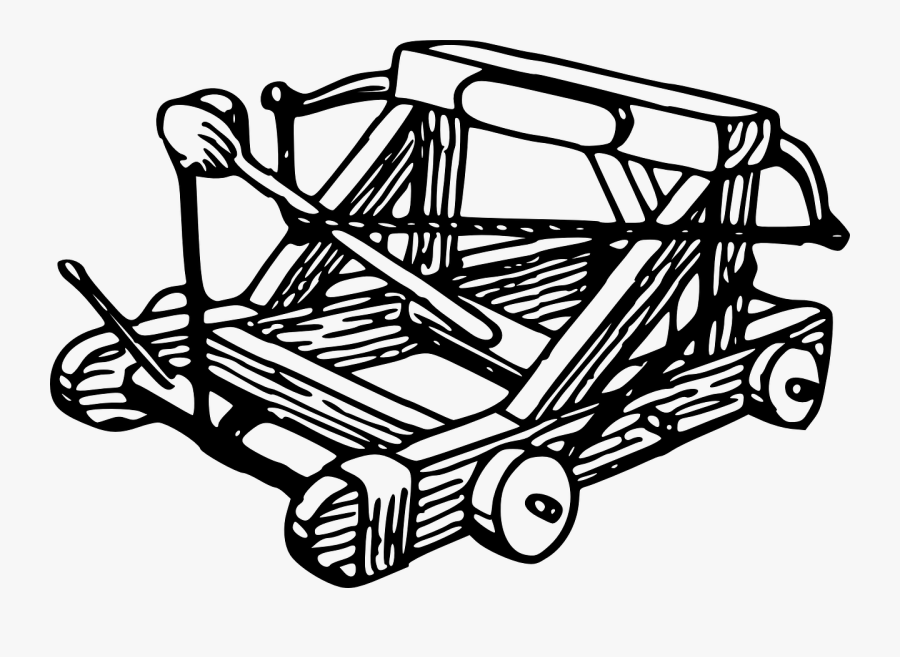
Mangonels shot heavy projectiles from a bowl-shaped bucket at the end of the arm. The bucket could launch more rocks than a sling; this made it different from an onager. The sling was changed to a bucket for more force when firing. In combat, mangonels hurled rocks, burning objects (fire pots, vessels filled with flammable materials that created a fireball on impact), or anything else readily available to the attacking and defending forces. The more unusual types of projectile included dead (and often partially decomposed) carcasses of animals or people (and even human heads), used to intimidate, demoralize, and spread disease among the besieged. This tactic often proved effective. The short supply of food, which was often of low quality or rotting, combined with the cramped living space of the defenders, poor hygiene, and vermin infestations provided an ideal scenario for the spread of disease. It should be noted, however, that the mangonel's principal role in battle, particularly medieval battle, was to knock down a castle or city's walls and infrastructure, not to kill troops. Its unpredictable, yet powerful strikes were best suited to hitting broad, non-moving targets such as buildings or walls.
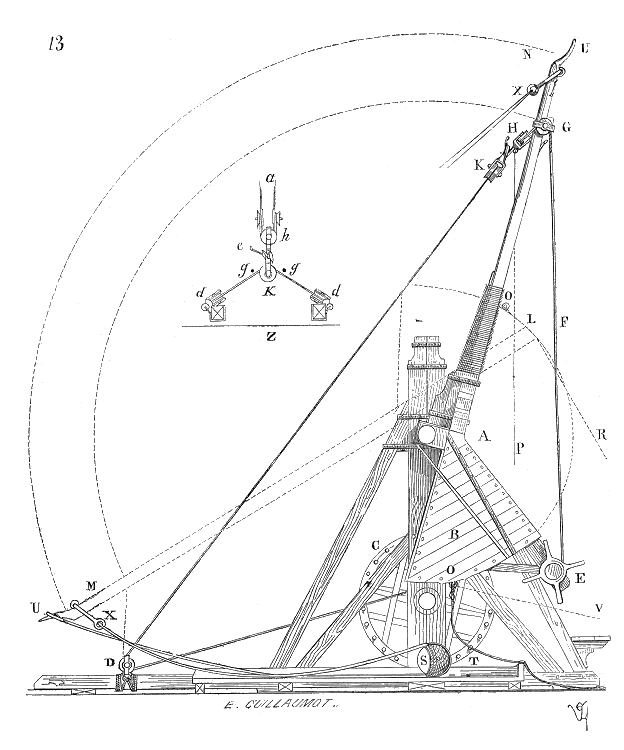
The mangonel in the Middle Ages had a different connotation from the roman Onager, it was more likely a fixed counter-weight siege engine similar to a trebuchet, its only difference from a trebuchet was its fixed counter-weight which was pulled down by several men, this way, with trained workers, the leader of the craft could adjust the strength applied to the mangonel.
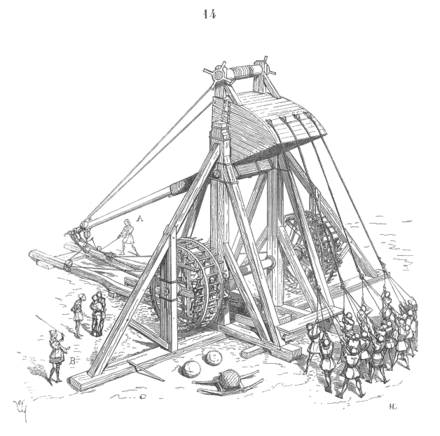
The mangonel was loaded by lowering a rope with a hook at its end, this hook was tied to another rope connected to a "pulling" system (this could be a Pulley compound, a Gear compound, or even an animal traction system) to pull the rope and lower the main rod. Once the rod was lowered a few workers were responsible for the attachment of a sling where the projectile is placed. When the mangonel was loaded the leader gave the order to release the main rod, and at the same time several men (usually around 20) pulled the ropes attached to the counter-weight.
If the crew was well trained, it was possible to control whether the projectile traveled in a low or high trajectory, but if the crew was not well trained then existed the risk of the projectile killing friendly troops or even the crew itself.
